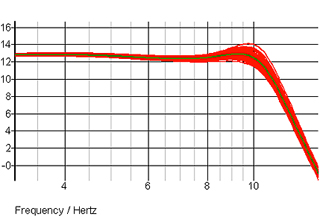el00
Member level 5
Hello
I need to build an analog high pass filter with a very steep response. Chebyshev 8 poles filter is not enough.
I cannot use digital filters in this application.
Unfortunately all the tables available do not go beyond 8 poles.
Switched capacitors filters are a bit noisy, but I do not exclude them at this stage.
What do you suggest?
I think I need to go to 16 poles, I know that it is a lot, but I need at least understand how it is feasible and how much noise I will inject in the system.
Thank you
I need to build an analog high pass filter with a very steep response. Chebyshev 8 poles filter is not enough.
I cannot use digital filters in this application.
Unfortunately all the tables available do not go beyond 8 poles.
Switched capacitors filters are a bit noisy, but I do not exclude them at this stage.
What do you suggest?
I think I need to go to 16 poles, I know that it is a lot, but I need at least understand how it is feasible and how much noise I will inject in the system.
Thank you
